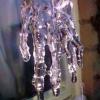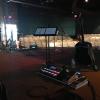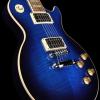Leaderboard
Popular Content
Showing content with the highest reputation since 11/26/2025 in all areas
-
A reminder to all users that this forum is a peer-to-peer user forum. No one from Line 6, particularly not the developers, is required to hang out here. Some do occasionally out of personal interest but we as users shouldn’t count on it. Nobody here can fix a bug or implement a new feature. Accordingly, this is not the official place to make bug reports or feature requests. If you want your bug report or feature request to actually reach Line 6 you need to do something else. To report a bug, open a support ticket. https://line6.com/support/tickets/add.html To submit a feature request: https://line6.com/company/contact/productfeedback/6 points
-
I have read the Stadium online manual from beginning to end. I realize it cannot be in download format because of the embedded videos. So, whether that is good news or bad news it is, in my humble opinion, just news. I realized answers to about 80% of the questions so far, including my 60% of questions, are in the manual. There are few typos regarding XL versus no XL but Line 6 may correct them once the non XL ships. I, for one, will be sitting down for about a week going through each step of the manual. The various sub displays on the touch screen make it worth it for me. If I am not back in a week that means I wasn't able to shower after woodshedding and my wife isn't allowing me in the house until I go YMCA and shower there. I can only speak for myself in that, after reading the complete manual and checking the videos, it will be well worth the trouble for me. Wish me luck. jpd3 points
-
I just received my Stadium XL yesterday and I was able to stay connected for 4 hours.... no disconnects from the edit software (Windows). I have an eero mesh Wi-Fi (currently connected to the main AP) and my AP is in another room, about 15 feet away. I am connected at 5Ghz speeds on both the PC and the stadium. So... for me very stable. I would suggest that if you are having issues, try to get both devices on the same speed but if your AP is very far away, try to get both devices on the 2.4Ghz channel. This may not be a bug for Line6 to address.3 points
-
Warning: This is a lengthy and future oriented post. Probably not for everyone. It’s aimed at users who use lots of presets, want to manage different band setups, want to share the Stadium device with other users, or… The handling of presets and setlists has fundamentally changed from Helix to Helix Stadium. You can no longer swap setlists in and out willy nilly because they contain only aliases to the actual presets that reside in the USER setlist, of which there is exactly one with a limit of 512 onboard presets at any time. Also, since setlists contain only aliases it is possible to accidentally end up with a setlist that is not synchronized with the onboard presets - e.g. importing a setlist containing an alias to a preset that has since been deleted from the USER setlist. Or (worse) exporting a preset from a custom setlist view, thereby exporting the alias and perhaps unintentionally overwriting the actual preset in your computer folder. Further, we know that the Showcase feature is coming and that it will support preset and snapshot changes at any point in a Song. When you put all this together it becomes clear that the USER setlist, custom setlists, and Songs (including audio stored on the microSD card) are an integrated dataset that must remain synchronized. How do you manage this from a workflow perspective? How do you keep your dataset synchronized and work around the 512 preset limitation? Easy to say ‘just remove the limit’ but there will always be a limit and no matter what it is it will eventually be reached because…. Well, because we can. Now, 512 presets seems like a lot to me but I am a studio player, not a multi-band gigging musician. If I find myself in a different situation someday and keeping things synchronized becomes complicated, the following is what I would do. There is a set of functions called Helix Stadium Maintenance that is accessible using a special startup sequence as described in the final section of the online manual. Hold down the Home and Song buttons when starting up. Among the maintenance functions is a Backup and Restore capability. The manual states that the Create Backup function saves the backup file to the inserted microSD card. That’s the key to maintaining different synchronized datasets, essentially different system images. You can use different microSD cards to store different system images, with each image being for a different purpose. For instance, you could have a different dedicated image/SD card for each band you belong to, or simply for overflow when you have exceed the 512 limit, or for different device users. Here’s a suggested workflow to utilize this strategy: At the end of each session you would need to: - power down the Helix Stadium device - restart it while holding down the Home and Song buttons. This will cause the device to start in the Helix Stadium Maintenance mode. - insert your desired microSD card and Create Backup - when complete, select the Shutdown option on the Maintenance screen At the beginning of each session you would need to: - restart the Helix Stadium device while holding down the Home and Song buttons. This will cause the device to start in the Helix Stadium Maintenance mode. - insert your desired microSD card and Restore Backup, selecting the desired backup file - select the Shutdown option on the Maintenance screen - restart the device normally This workflow would provide a means to work within the current limitation and ensure that you always have a system with a dataset that has synchronized onboard presets, custom setlists, IRs, Songs including audio files, and (bonus!) Global Settings.2 points
-
Glad you got it working. I want to correct some inaccurate information I provided earlier. The Helix StadiumMaintenance screen is not available from the Menu icon. It is only available through a startup sequence. You can hold down either FS 6 and 12 (as I suggested) or the Home and Song buttons (as described in the manual) when powering up.2 points
-
The manual isn't clear on a reinstall. It only tells you to use Helix Stadium Edit, and that is only for updates. I just reinstalled my firmware by using Line 6 Central.1 point
-
Thanks for the reply data. I did read the manual first before posting. Global EQ is on page 54 in the manual I have. The manual does not mention a symbol on display, which is why I was asking here to be sure.1 point
-
As I've also mentioned. A few times for me a preset would become "corrupted". The only thing to do is to recreate it from scratch, then it would start behaving normally. You need to get to the bottom of this by recreating the preset, one block at at time, then try the experiment again. If a preset is corrupted, then expecting it to work properly is just a waste of time.1 point
-
Yes, custom setlists is the way to go for live events. Be aware, though, that the implementation of setlists is completely different in Stadium vs. OG Helix. There is a big conceptual change, and I think some bugs that still need to be worked out. The following is aimed at all readers here, not you specifically….. Conceptually, the USER setlist is now the only place where the actual presets live. A custom setlist is a list of aliases (pointers) to the USER setlist presets. Read the associated section in the online manual for clarification. This is still early days for the new mindset and implementation. I have experienced and reported some behaviours that I think are bugs: - when you Export a preset from the USER preset view it creates the associated preset file on your computer, as expected. When you Export a preset from a custom setlist view it creates a copy of the alias on your computer. If you’re not careful you can overwrite the actual preset on your computer. I think Exporting presets from the setlist view should be disabled; I can’t see any use for saving a single alias in a file. I can see a use for exporting/saving a setlist of aliases. - I have also experienced duplicates. I think there should only be a single copy of any preset name. I think any bracketed duplicate preset name is the result of a bug. If it’s a different preset it should have a different name; if it’s actually a duplicate of the same preset it shouldn’t exist. That’s the whole idea of the new implementation. My suggestion at this point, until some bugs are resolved, is to edit and Save presets only from the USER setlist view. The interaction between the presets themselves in the USER setlist and their aliases in custom setlists is where I think the bugs live. This will require careful attention and some extra touches (on the device) or mouse clicks (in the app/Librarian) for a little while to make sure you are in the USER setlist view but it should reduce the unexpected behaviours. I may end up eating my words here. If there is a valid reason for duplicate presets to exist in the USER setlist I would like to hear it. Meantime I encourage everyone experiencing duplicate preset names to open a support ticket to report it. The more info and evidence Line 6 has of these bugs the more likely they will get fixed sooner than later.1 point
-
A few times now I've been just editing presets as usual, and out of nowhere the outputs all go dead silent. My setup is: Path 1A/B for an electric guitar setup (with quite a few blocks, but room to add more in DSP); Path 2A is a route for acoustic guitar, which I haven't been working on yet, but did load some blocks, with room to spare; and Path 2B is for vocals, which I also haven't been working on, but have added blocks with room to spare. I have 1/4" out routed directly to my MOTU with Studio1 7 Pro running an amp and cab block. I'll be running live into a real tube amp and cab, so I'm simulating that on my PC where I can quietly level match and get some starting points for tones before rehearsals. No USB plugged in or anything else other than the guitar into Input 1 and the power cable. I'll be messing with stuff, minor tweaks or block changes, then play a bit, and at any point during my work/testing the audio will just go dead. The 1/4" icon in the home/edit screen is solid green like it's pumping out solid walls of sound, but there's no signal. I can't get it back by muting/unmuting, switching outputs, switching presets/snapshots/blocks, and the click doesn't sound; it's just dead quiet with no signal going into my DAW. Only a full power cycle of the Stadium XL will bring the audio back. I have not tested any other outputs beyond the main 1/4" outs yet. I'm terrified to gig with this at this point. Has anyone else experienced this?1 point
-
Lots of people are making suggestions in this forum, but it would be great if you could also reach out to Line 6 directly. Unfortunately, at least one link to that is broken. It is this: https:/line6.com/company/contact/productfeedback/ and support https://line6.com/company/contact/ Line6: maybe fix the broken link in the "IdeaScale Retirement" post?1 point
-
Bugs should be reported through support tickets. Feature requests should be made via product feedback.1 point
-
The Big Book of Helix Tips and Tricks (available on Sweetwater, author Craig Anderton) does a fantastic job of this. There’s also a very good website: helixhelp.com1 point
-
I'm saying to uninstall/ re-install everything Line 6, BUT... I had a little more time to look at your screenshot of your Device Settings. Before I make any other suggestions, a couple of questions: What is your Lenovo's FULL model #? Processor model? When you got it, did you perform ALL of the available Windows updates? That means rebooting and re-checking Windows Updates until there were no more updates to install on two or more successive reboots? Did you then install all of your other (non Line 6) applications? What applications did you install? Are you backing up all of the relevant (to those applications) data directories to OneDrive or elsewhere in the cloud? Are you using ANY antivirus/malware programs other than Windows Defender? Did you uninstall whatever crapware that the Lenovo came with pre-installed? A screenshot(s) of your Startup settings - SETTINGS>APPS>STARTUP - could be helpful here. I know, that's a lot of questions and you might not understand why they are relevant, but there is no logical explanation for why a brand new Win11 system should be as hosed as yours seems to be, and before I make any further suggestions I need to know these things so that I don't make things worse. TBH - depending upon your answers to the above, my best advice MIGHT be to restore it to the condition it was in when you took it out of the box, then come back for advice on how to proceed. But that could be painful and very time consuming. I've been using Windows since before there was Windows (DOS) and if it's not necessary...1 point
-
Try to save to USER 2 from the Helix and see if the same issue happens. Press "Save" on the Helix itself, select USER 2. This way you will see if the issue is with the Helix or HX Edit.1 point
-
When are we going to get a printable file version of the manual? Some of us like to read and understand things to make better use of the unit's features. Especially with the upgrades coming for Showcase and Proxy. The on screen stuff is great and all but something of this depth and complexity needs a manual.1 point
-
Sounds like the next step is the complete driver uninstall/reinstall. Not to be debby downer and not sure it’s relevant, but I’m my family’s Windows support tech. My sister had a Lenovo laptop, and it was a royal pita from day one. Replaced with a Dell, no problems. My older i7 laptop is an HP, not even technically Win11 compatible, no problems. Also, if this is a new laptop with a factory Win11 installation, you may ultimately wind up doing a clean Windows installation. Worst case, but try the driver uninstall/reinstall first.1 point
-
USB Input 1/2 is reserved to receive the output of your computer (e.g. your DAW). It comes into the Stadium device as an Input that is shown in the Matrix so that you can balance , pan, mute/solo it to mix with the other outputs from various sources. It does not appear as a selection in the Input block because it is reserved.1 point
-
1 point
-
Ok, so i have not contacted support. But i have tried a lot of things now, and after having it for a decade i think it's just done. Perhaps hardware failure or whatever. Today i recieved Stadium XL and i don't have this noise issue at all! I have moved on. Sorry for not having any solution to this1 point
-
You need to open a support ticket to officially report a bug to Line 6.1 point
-
I captured a bit of Steve Sterlacci's video: and imported into Logic so I could use Match EQ to learn more about the differences between Helix Floor and Helix Stadium Agoura amp models. Steve clearly demonstrates the long known issue with Helix Floor having a somewhat odd high-end emphasis (sometime call squirrels, fizz, ice-pick, etc.) that needed to be tamed with pretty aggressive high cuts in the cab block. The Agoura amp models don't see to have this emphasized and somewhat tiring high end. We can use Logic's Match EQ to get a better idea what EQ would be required to make Helix Floor more closely match the Agoura models, and maybe be better informed about how to EQ Helix Floor to tame the high end. The Match EQ graph is quite interesting: As we might have expected, there's additional high end in Helix Floor starting at around 1 kHz, gradually increasing to about 8 dB at around 6 kHz that Match EQ is cutting. What's surprising is the significant boost in the "air" frequencies about 6 kHz and up to 20 kHz. That could be part of the amp models, or the better hardware in Helix Stadium. Now I captured this off a YouTube video, so I don't expect the audio to be that great. And I only matched one sample from the video. So this might not be that accurate. But it perhaps gives us a starting point to know how a little more about how to tame the Helix Floor's high end. So try it, using a high cut at say 5 kHz, or parametric, graphic or even global EQ to match what Match EQ is suggesting. This might breath new life into your Helix Floor.1 point
-
lespaulphase90, As silverhead stated you need to use the Helix Stadium XL down of "Helix Stadium. HX-Edit does not work. I've added a screen shot. I was little confused at first myself. You will only connect via Wi-Fi on the same network for creation on the Stadium. You will not use the USB cord for creating presets and setlists for now. If you do need to use the USB cord it would be for updating firmware in a pinch or connecting to your DAW; the reason for the Stadium drivers. I had to use a USB-C to USB-C cord as nothing else would work; and that was after I read the manual. I chose to uninstall everything "old Helix". The software, the HX Edit, the drivers, etc. I even removed the uninstall module(s). Hope this helps. jpd I1 point
-
Stadium’s been on the floor for several hours now. No app drops, even after my pc went to sleep for a bit I was still connected. All saved changes to parameters via snaps worked perfectly. FWIW, I never had a drop in audio.The output Matrix is awesome. I gigged with it last Sunday, sounded better than OG and had no issues. I did notice I had a stronger network connection on Stadium. I would suggest the drop at least in my case was a weak signal at that spot prior to adding the relay box. Hope this helps.1 point
-
I didn't think to ask ... Mac users will have to chime in for that OS, however, I know that Windoze (not a misspelling this time) likes to "control" power settings for many devices, USB, network etc. For my wired and wireless device properties I always make sure I DO NOT allow the computer to turn off the device to save power. Here is an example for my wi-fi device but the same is true for the wired network device. Just in case this helps for those not aware of this setting. For those aware of this setting please forgive me. jpd1 point
-
So not sure if this is the same bug, but there is a repeatable issue. Go into preset 4B "Smells Bells" and swap the reverb to dynamic plate...just make sure you can turn it down or bypass when it goes nuts. I'm not sure if this is a setting issue between the two, but it doesn't seem like digital feedback is the intended result.1 point
-
To make an official feature request to Line 6 developers follow the instructions you’ll find in the Ideascale Retirement banner near the top of this page.1 point
-
+1 for this! I don't want to tap or touch anything to see my current BPM1 point
-
Among all my amps, I still have my DT50 212. I would love to see the Helix Stadium support it. I doubt that it will happen.1 point
-
1 point
-
Well, more folders of user presets would be a nice future addition to stadium. (Is there a way to make future firmware update requests? Ideascale?) Even if that means that the folders are saved in the sd card, and the presets load slower. I share my OG helix floor with my 2 brothers and we currently have 13 setlists in total. About 4 setlists each. We have to import/export setlists and IR's all the time, each time we are going to use the device. When Stadium was announced, and Eric said "thousands of third party Ir's and 127 setlists" we thought, problem solved, finally. We didn't realized setlists would be pointers. I really hope more user presets slots to be added in a future update, that will be the selling point for me. Until then we will stick with the OG helix, unless proxy is ground-breaking.1 point
-
Similar experience last night. I changed the reverb to dynamic plate and about 3 seconds later it freaked out and continued even after changing patches. I think that it went away after changing patches a few times....I don't think that I cycled power.1 point
-
To make an official feature request follow the instructions in the Ideascale Retirement banner at the top of this page.1 point
-
Do you have Snapshot Edits setting set to Recall BTW? I've had issues with parameter assignments completely not working when editing one preset, it would affect the other, etc. The issue for me was on 3.15, before I downgraded to 3.11. And now I'm on 3.7.10 -- no such issues for me there. Maybe it's a new bug with HX Edit on Mac or Windows. What happens if you save to a different setlist from within the Helix? Simply press save, and select a different setlist. Also, sometimes presets become corrupted as well. I've had this one preset that just had a different gain compared to the others. I checked one block at a time, recreated it, and the sound was back to normal. I haven't been able to pinpoint what exactly was different, but I had to basically recreate the preset from scratch, so it would start behaving correctly.1 point
-
1 point
-
Made the switch from the Helix Floor to the Stadium XL. Been trying everything I can think of to get the Helix Stadium XL to recognize my pedal. I use it for almost every patch and song. Much appreciative of any feedback or advice.1 point
-
He also frequently reminds us that they don't publicly discuss the details of future updates. Reading between the lines, look at the price points of the products. Helix is still in the top three modelers for both quality of sound and features. Unless you NEED the advanced features of the Stadium products, the only reason to dump your Helix for a Stadium is that you have too much money in the bank. The only REALLY BIG DEAL feature in Stadium is the "PROXY" capturing/profiling (COMING SOON!). I own a ToneX and have tried NAM and, TBH, I'm underwhelmed. Not that they sound bad but faced with the choice of tweaking knobs until I get a sound I like (what we do with REAL WORLD amps) or auditioning 100,000 captures (another rabbit hole like the 100,000+ IRs I have purchased over the years), I'll keep tweaking, Thank You Very Much! Helix will continue to sell well to players who need a great sounding modeler and would rather spend our time PLAYING MUSIC. As to updates, I've owned mine for 10 years and never been disappointed in the updates. If they never added another feature I wouldn't complain, but I suspect that we'll be pleasantly surprised as they continue to improve/optimize the platform in order to continue their dominance at the Helix family's price point in the market. Interesting side note - Fractal just released a new product that looks VERY MUCH like the HX Stomp XL, at that price point. No capturing there either.1 point
-
No way to say for sure but Line 6 may be influenced by customer feedback. I suggest that anyone having difficulty maintaining a WiFi connection with the Helix Stadium app/editor should open a support ticket.1 point
-
Hope this helps as well - In the list view for amps (not legacy amps) there will be a thin gray line and any amp above is Agora and those below are HX.1 point
-
Open a support ticket or call Line 6. Info for both is under the Support link at the top of this page. If that’s too much of a hassle then …. do whatever to deal with your issue.1 point
-
I had an original Helix and while I liked the programming and setup, the effects loops pass through were a deal kill for me. I went on to try a bunch of modeler units, except for full on Fractal. Maybe had I gone Fractal that might have done it for me. Instead I tried many, a thousand different variations. Just never happy w the tones and feel. Then I came to Universal Audio's amp pedal modelers, 4 of those in a bypass switcher were just amazing, not just real amp sounds but maybe better as tube amps are moody and degrade w time. Reading on the features and improvements of the Stadium XL I decided to bite the apple once again and sold off tons of stuff for the hope Line 6 would bring the torch. I would have stayed w my UAFX rig and been happy but I wanted the promise of greater integration, more amps and cab IR abilities. So far just baby steps trying to find my way around the Stadium. NO printable file manual yet (come on guys and include the models list in a printable file!) Some of us like to attend flight school before taking the plane up. That being said the features on the Stadium are indeed workable and usable merely by using the on-board info stuff and bumbling around. So far the amps are floating my boat in sound and feel, very happy w the new Agoura stuff. Std effects are still the hit and miss of Line 6 stuff, some good some unusable, typical. I've never been a fan of most digital pedal mimics outside of delays/reverbs and some modulation. Stadium has the best of what you would expect from modeled effects. I mainly was after high end delays and reverbs. I wanted to be able to pipe in my hand picked unmatched pedals and later on, hopefully see if Proxy can create a close mimic. I wanted the unit for amps and anything else is just icing, a lot of icing on this cake. Possibilities are yet to be imagined, a supreme Star Trek level technical ecstasy. Looking forward to learning the unit more and upcoming additions and upgrades. My search for the best amp modeling capability has reached a mountain top. I cannot imagine anything "better" nor ease of use. Did I mention how much fun it is messing with this unit? The mere aspect of having fun playing is over looked, while there are certainly tons of options and params everywhere one does not seem to fall into the typical black hole of option paralysis I usually fall into.1 point
-
That might be accurate but I’m not sure. As I understand it the Legacy Amp subcategory includes amp models of previous generations of Line 6 modeling such as POD HD500, or POD XT/X3. The Guitar Amp category includes both Agoura models and Helix models as indicated here: https://line6.com/helix-stadium-models/1 point
-
Just learned the hard way that if you click a preset in a "set list" and export it as a file, it's a 1K file with nothing in it since set lists use Aliases. You have to export the preset from the "User Presets" list to actually export the preset.1 point
-
STFW means Search the F*&$ Website! I just want to highlight that Line 6 has taken a new approach to the product manual for Helix Stadium. It is not a downloadable PDF file. Instead, it is its own integrated, cross-referenced, well indexed, searchable website that includes links to videos where appropriate. It also includes the Helix Stadium app ‘manual’. The Support -> Manuals area provides a link to this new ‘manual’. I strongly suggest you check it out. For your convenience… https://line6.com/helix-stadium-manual/ We all know that it is common etiquette in user forums to do at least some research for existing answers to questions, especially basic operational questions, before asking in the forum. This new approach to the manual makes that very simple. So, in future, rather than suggesting that someone RTFM I will just say (politely, of course) STFW.1 point
-
There’s a banner on this page just above the topic title that provides some interesting info on preset transfers. It doesn’t mention exactly what you are referencing but it’s handy to know anyway.1 point
-
Definitely am upgrading to the Stadium XL, I'm just going to wait a little while to jump onboard. My og Helix is so well dialed-in that I'm not even that concerned with Agoura...my primary reason for getting the Stadium is for processing power in regards to using Snapshots. And then of course, there's Showcase. In fact, I can honestly, genuinely say that there is nothing--NOTHING--Fractal, QC, Kemper, etc have anything to offer that's genuinely better than what I've got dialed into my Helix. Trust that I've tried several times: I had an Axe Fx III and returned it. I've spent all kinds of money buying and a/b'ing tube heads against the Helix, and my Helix patches have gotten to a point now that everything else out there has stopped mattering in terms of feel, sound, etc....including the Stadium even. So all I care about is having more processing power to get Snapshots to be useable in my case. My FM9t sold earlier today, so I'm setting those funds aside for my Stadium XL and I'll sell the og Helix this summer when I'm ready to switch over. I'm still having mad fun with my og Helix and still feel like it's hiding a lot more things I've yet to discover.1 point
-
I bought my Helix in November of 2015. I sold it a few years ago because the sound of amp breakup always sounded off to me. I bought an FM9 and I do prefer its sound to the original Helix. I just traded in the FM9 for a Helix Stadium XL because the Helix user interface is so much easier than the Fractal. On the FM9 I would make a patch at home using my computer, but it wouldn’t should great at rehearsal and making changes on the unit itself is quite a challenge. I’m hoping the Agora modeling lives up to the hype.1 point
-
I saw your post while trying to fix a similar problem. This worked for me: After I installed all the latest upgrades to the drivers and the editor, I restarted the system then followed these steps. 1. Open System Preferences in OS X Catalina 2. Select "Security and Privacy" 3. Select the "General" tab 4. Look at the bottom for an alert about system software prevented from loading 5. Select to allow software from Line 6 6. Open POD HD500 Editor 7. Connect the POD to the USB Done! I hope this helps!1 point
-
I knew it was something simple, I went into the mixer part of pod farm sure enough right at the top it was set to instrument (never remembered even doing that), set it as Mic 1 and bam instant sound thank you!!!!!!!!!!1 point
-
In Pod Farm, have you selected MIC rather than Guitar as the Input? I believe you do this in Pod Farm's Mixer screen, but I'm not sure.1 point
This leaderboard is set to Indiana - Indianapolis/GMT-05:00
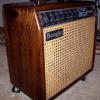
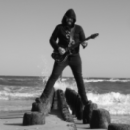
.thumb.jpg.9b45f80c19eb8dece1fc7d6e6949195e.jpg)
